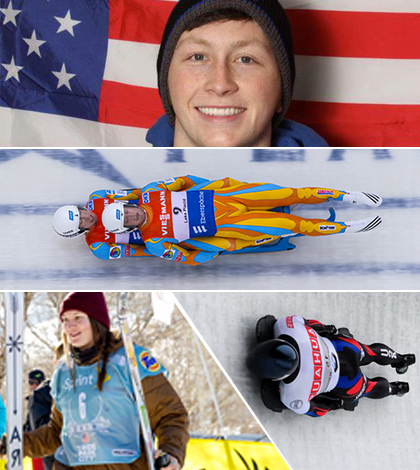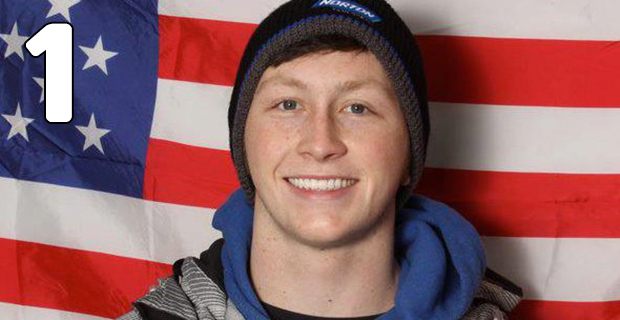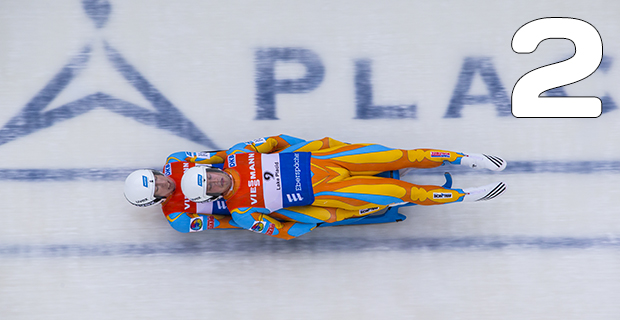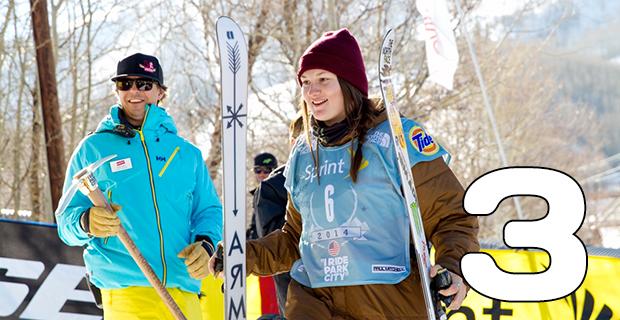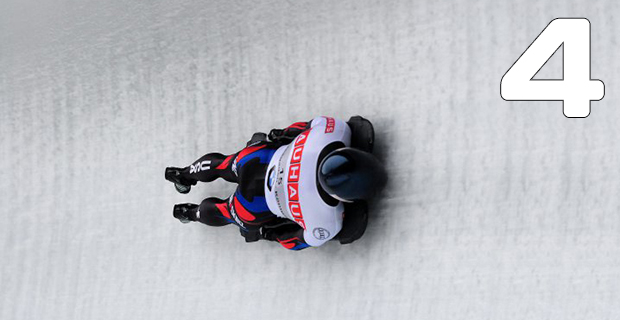THE LUGER
Rocking his luge sled back and forth before launching forward, then using his spiked gloves to paddle the ice below, Aidan Kelly quickly lays flat on his back as he slides 90 mph down a mile-long serpentine track in less than a minute. Just his racing suit, helmet and sled separate him from the frozen flume. “It’s really hard to describe the feeling,” the 19-year-old from West Islip says, recalling when he qualified for the 2014 Winter Olympics. Despite crashing amid a World Cup race that served as the Olympic qualifier, Kelly clinched the third spot on the US Luge Men’s Singles squad in December—the most dramatic day of his career so far. Kelly, who makes his Olympic debut in Russia the day after the Feb. 8 opening ceremony, was recruited after a tryout at Bald Hill in Farmingville following the last Winter Games. The sled was on wheels. He credits skateboarding with his gift for sliding, “because the way the sleds drive are similar,” Kelly says. “It’s scary sometimes, but that’s what makes it so exciting,” he says. “There’s gotta be a hint of fear or else there’s no fun to it. I think my whole team is full of adrenaline junkies.”
THE TWO-MAN LUGER
As a member of the New York Army National Guard’s 1156th Engineer Company, Sgt. Matt Mortensen can’t be beyond a 100-mile perimeter of Lake Placid unless he receives permission. Apparently a trip to the Olympics is a good enough excuse. The 28-year-old Huntington Station native, one of nine soldiers in the U.S. Army World Class Athlete Program headed to Russia, and one of seven Mortensen children, got his first luge-induced adrenaline thrill when he was only 10 years old. But his journey to the pinnacle of his sport officially began when he competed in his first international event at 13 in the Junior World Cup. “I’m a pretty determined person,” he says from a hotel in Latvia. “I don’t like to fail at anything that I do.” In the lead up to the 2010 Winter Olympics, Mortensen and his Men’s Doubles partner were considered favorites to compete for Team USA but lost a do-or-die race by .02 of a second, a crushing defeat. Making the team this time around “was the only outcome,” he says; Mortensen didn’t know how he would mentally cope with falling short again. “Being able to compete for the USA and represent my country means a lot to me. Also, being a soldier really means a lot to me.”
THE SKIER
Well-behaved women seldom make history, as historian Laurel Thatcher Ulrich wrote. For daredevil Devin Logan, it’s her extreme sports successes that earned her a spot on the U.S. Freeskiing Team to compete in the first-ever women’s ski slopestyle Olympic event—performing aerial tricks off a series of mountainside box jumps and rail slides. “A lot of the world hasn’t seen what we do, but I think they’re gonna be amazed because it’s an action sport, and it’s high-flying, high-risk,” says Logan, who was born in Oceanside and grew up in Vermont. “It’s really fun to watch.” The event is one of eight new additions to the Winter Games, including the debut of women’s ski jumping. Logan, who turns 21 a week after she competes Feb. 11, made her name winning various Winter X Games events as a teenager. “Hopefully people don’t think we’re just going and hucking ourselves and hopefully landing on our feet,” she says. “It takes a long time to get where we are and have that air awareness and ability to know where we are and what tricks we’re doing.” She may be a world-class, polished pro skier, but when it’s time to get big air, she smiles and says: “Grip it and rip it!”
THE SKELETON
John Daly’s first foray into ice sports that require riders to travel at ridiculous speeds started at Smithtown Middle School when his gym coach encouraged him to give luge a shot. He tried, but quickly learned it wasn’t for him. Daly opted for skeleton instead, a lesser-known sport with equally thrilling speeds that dares brave competitors to travel down an icy course at 80 mph-plus speeds headfirst. The decision paid off for the talented Smithtown-native who nine years later qualified for the Winter Olympics Games in Vancouver in 2010, where he finished 17th. Daly, 28, learned on Jan. 29 that he’d be making a second trip to the Olympics, and blasted a message to his hundreds of Facebook fans thanking “everyone who has supported me throughout my career,” adding: “It has meant the world.” Daly is forever grateful to his parents, who’ve spent years driving him from Suffolk County to his training grounds in upstate Lake Placid and back. “I know without a doubt I wouldn’t have become an Olympian without the support of my family,” Daly says in his Team USA bio. Daly predicted back in 2010 that it wouldn’t be his last Olympics. He was right, and now the veteran racer is hoping to return home with a shiny gold souvenir around his neck.



